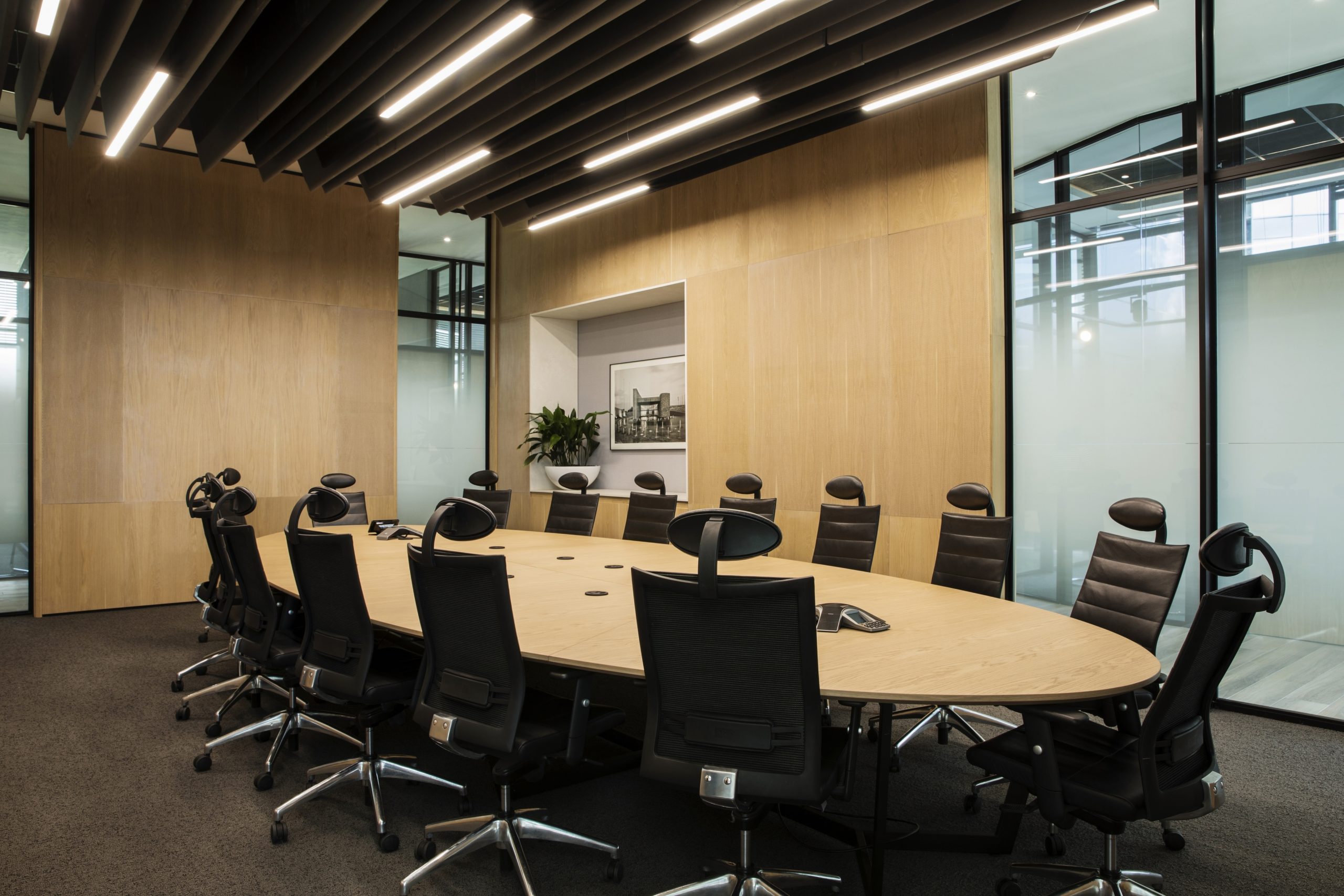Monday, February 8, 2021
Publisher:
Architect Africa Online

Citadel main boardroom at 1 Park Lane. (Pic by Sarah DePina)
While the most significant long-term impact of Covid-19 will be issues stemming from flexible working, in the long term “we are going to have to find the balance between working from home and the office,” points out Paragon Group Director Anthony Orelowitz. “We are going to find that our current response has many unanticipated pitfalls and that the trends of the future are going to have to address these issues.”
In this regard, office-space planning is likely to shift away from ‘a place to sit and work’ to ‘a place to communicate, collaborate and build company culture’, reveals Paragon Group Director Estelle Meiring. “Despite the fact that the lockdown has shown that we can work from anywhere, it has also emphasised that humans are social beings who need interaction to remain productive and positive.”
Orelowitz highlights: “As architects and designers, we are going to have to design buildings and workspaces that entice people back into the office and enhance culture, connections and workflows. We are going to have to reimagine what the working experience can be. Covid-19 has accelerated the dialogue around culture and new ways of working. This is a very exciting time to be a designer.”
Looking at the office of the future, this is likely to feature a lot less traditional workspaces and far more couches and social seating, even if these seats each have their own fold-open writing desks, for example. There will be a move away from open-plan layouts to wider corridors and doorways, additional partitions between departments and a lot more staircases.
Although the staff numbers of companies occupying office space at any one time will decrease, other health measures may well increase the amount of space required per employee. Furniture may change, too, as office desks have shrunk over the years from 1.8 m to now 1.4 m and less, but there might be a reversal of that trend as people need to sit further apart.
It is even feasible for legislation to be introduced that mandates a minimum area per person in offices, as well as a maximum occupancy for lifts and larger lobbies to minimise overcrowding. For commercial property, some reduction in the demand for office space is anticipated, but not to the extent that companies will half their required space, for example.
The post Offices are still important for collaboration and building company culture appeared first on Leading Architecture & Design.
Source Leading Architecture & Design Office Buildings Paragon Group
